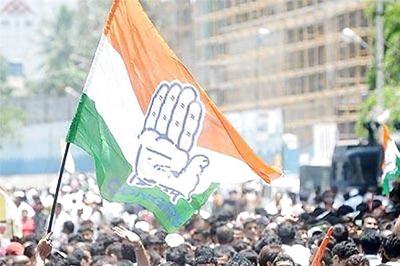
views
New Delhi: At a time when the government appears to be clearing the runway for Air India’s disinvestment to take off, the airline flying into its highest-ever net loss is surely unwelcome news. It is true that the national carrier has never returned a profit since the merger involving Indian Airlines more than a decade ago, so losses have ceased to surprise. But fresh numbers show that 2018-19 has been its worst year so far. A senior official of the airline who wished to remain anonymous has told agencies that Air India managed to lose about Rs 23 crore every single day, taking its net loss for 2018-19 to about Rs 8,400 crore.
The carrier had reported far lower net loss numbers in the previous three fiscal years and had never breached the Rs 8,000-crore mark since the merger. Its net losses during the first four years of the Narendra Modi government were Rs 5,348.18 crore in FY18, Rs 6,452.89 crore in FY17, Rs 3,836.78 crore in FY16 and Rs 5,859 crore in FY15.
This answer in Lok Sabha shows how AI’s losses have climbed over the years since its fateful union. The airline posted net loss of Rs 2,226.16 crore in 2007-08, Rs 5,548.26 crore in 2008-09, Rs 5,552.44 crore in 2009-10, Rs 6,865.17 crore in 2010-11 and Rs 7,559.74 crore in 2011-12.
As Air India’s loss-making spree continues unabated, the Modi government also continues to assert that disinvestment of the airline is on its agenda and modalities are being worked out. But one wonders whether there is more pain for taxpayers before (and if at all) this white elephant is taken off the exchequer’s hands.
Sample this: a written reply in the Lok Sabha earlier showed that of the total assistance given to AI since 2011-12 (when a turnaround and financial assistance plan was approved by the UPA 1 government), the maximum amount was provided under the Modi government’s first tenure. A government which asserts it is keen to offload this loss-making airline was simultaneously pumping in taxpayer money into it during its first term.
Of the Rs 30,520.21 crore pumped into the carrier in eight years (between 2011-12 and 2018-19), Rs 17,320 crore or 57% was given within five years of the Modi government’s first stint. Why would maximum funding be provided to AI by this government despite the airline probably missing out on stated financial and operational parameters linked to this financing?
So while the government’s intent to disinvest may be strong, it has not followed this up with suitable actions.
Now let us see what has been done to expedite disinvestment. After the bombed sale the first time around, it was decided to transfer a little over Rs 29,000 crore of the debt on AI’s books to a special purpose vehicle (SPV) and this debt was to be serviced thorough earnings from asset sales. A debt pile of over Rs 58,000 crore was cited as one of the reasons by prospective bidders to stay away from the disinvestment process the first time around.
The asset sales for the SPV include non-core assets and non-operational assets. But this too is not a good enough solution, largely because the airline is still saddled with nearly Rs 29,000-30,000 crore residual debt. And this number is still large enough to dissuade any prospective buyers. Besides housing the debt, this SPV was also scheduled to house four of Air India’s subsidiaries.
Not just remaining debt, other hurdles are apparent in any imminent sale of the airline. In the first attempt, the government had retained 24% stake, saying it will offload this at a premium later. The government retaining minority stake also spooked prospective buyers, who feared continued official interference. Indications are that the government may offer more than 90% stake in the second disinvestment attempt.
But with prevailing economic conditions, will finding a buyer be any easier? One of the oft-cited potential bidders, the Tata Group, seems uninterested in taking on AI and its accompanying headaches. IndiGo, India’s largest airline by passenger load, is also ambiguous about the prospect, preferring only some part of AI. As for non-airline bidders and others, a deepening economic slowdown may perhaps act as a dampener.
Also, one must take into account the government’s failure to successfully disinvest even a profitable subsidiary of the carrier. After the first attempt at AI sale had bombed, the government had initiated the sale of the profitable ground handling subsidiary in February this year. A preliminary information memorandum (PIM) for the sale of Air India Air Transport Management Ltd (AIATSL) had been issued then.
However, the process for AIATSL remains stuck. Potential investors have posed a number of queries, the PIM has seen at least five corrigenda, and the date of completion of the process is being pushed ahead continuously. Besides, no move has been made to initiate a similar sale of AISATS, the separate ground-handling joint venture of AI with SATS of Singapore.
With such insipid background to the entire disinvestment process and worsening financials of the airline, perhaps the government is left with no choice but to further sweeten the deal in its second disinvestment attempt. Even then, it remains to be seen if it tastes success this time around.
(Author is a senior journalist. Views are personal)




















Comments
0 comment